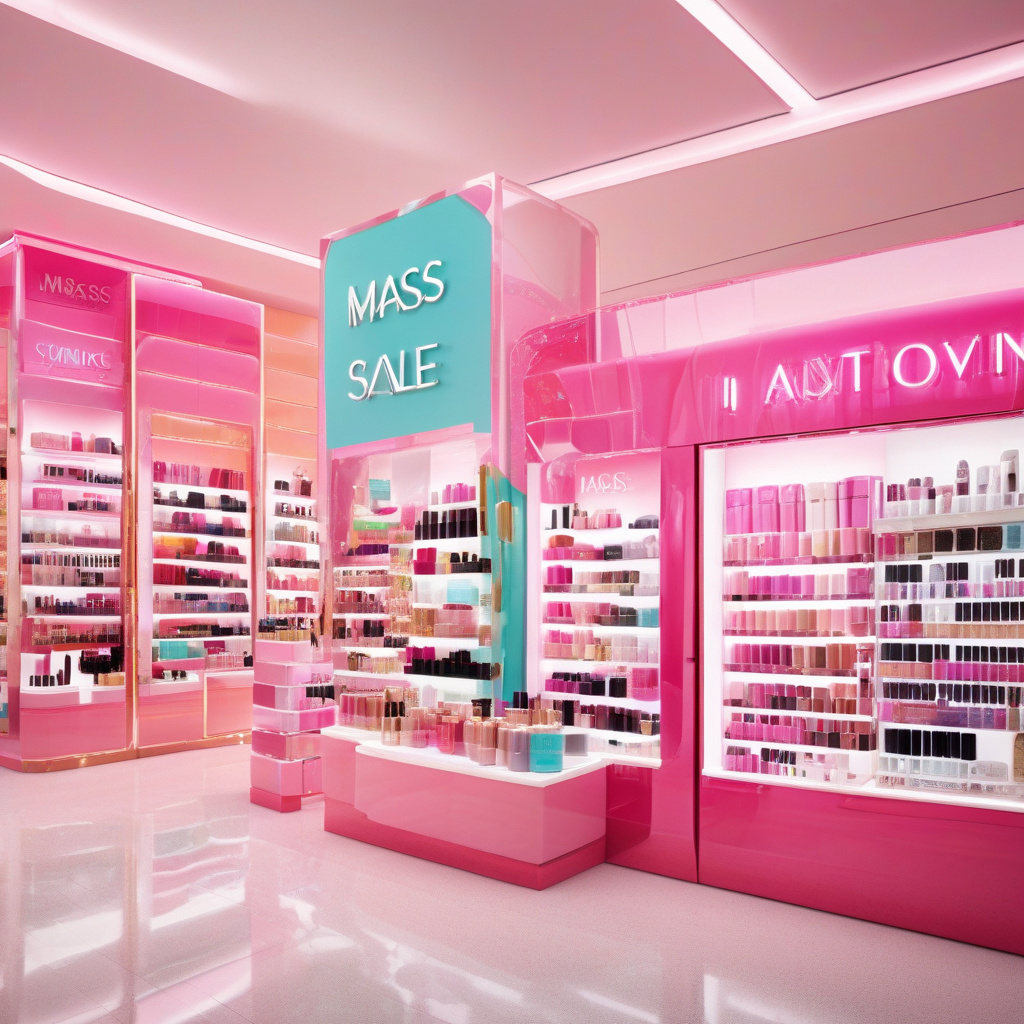Mass-Market Beauty Sales Growth Exceeds Prestige in Q1
In a significant shift within the beauty industry, mass-market beauty sales have outperformed prestige brands in the first quarter of the year. This marks the first time in several years that mass-market brands have taken the lead, a trend that could reshape consumer behavior and retail strategies moving forward.
The beauty market has long been dominated by high-end brands, which have traditionally enjoyed higher profit margins and a loyal customer base. However, the recent data indicates a notable correction in consumer spending habits. According to industry reports, the growth in mass-market beauty sales is not just a fleeting trend but reflects a broader change in consumer priorities and purchasing decisions.
One of the primary reasons behind this shift is the increasing accessibility of mass-market products, which are often priced significantly lower than their prestige counterparts. For many consumers, particularly during uncertain economic times, value for money has become a critical factor. Brands like L’Oréal, Maybelline, and Revlon have capitalized on this trend, offering quality products at competitive prices that appeal to budget-conscious shoppers.
Additionally, mass-market brands have made considerable strides in innovation and marketing strategies. Social media has become a powerful tool for mass-market beauty brands, allowing them to engage directly with consumers. Platforms like Instagram and TikTok have enabled these brands to showcase their products in creative ways, attracting younger audiences who are increasingly influential in shaping market trends. The viral nature of social media campaigns has allowed mass-market brands to compete effectively against the established prestige players.
Another critical aspect contributing to the growth of mass-market beauty sales is the shift in consumer values. As consumers become more aware of ethical and sustainability issues, they are increasingly drawn to brands that align with their values. Many mass-market brands have taken significant steps toward sustainability by adopting eco-friendly practices, reformulating products to exclude harmful ingredients, and enhancing transparency in their supply chains. This shift not only attracts environmentally conscious consumers but also presents an opportunity for mass-market brands to differentiate themselves in a crowded marketplace.
While the softening of high-end beauty brands in March indicated a correction, it is essential to highlight that prestige brands are not entirely out of the game. Brands like Estée Lauder and Chanel have long histories of brand loyalty and can adapt to shifts in consumer preferences. However, they must recognize the need to evolve their marketing strategies and product offerings to maintain engagement with consumers who are increasingly drawn to mass-market options.
Moreover, luxury beauty brands are beginning to explore collaborations with mass-market players or introducing their own more affordable lines to capture a broader audience. For example, the collaboration between high-end brands and influencers has proven to be a lucrative strategy, allowing prestige brands to reach new demographics while still maintaining their luxury image.
In terms of future projections, experts suggest that mass-market beauty sales growth may continue to outpace prestige brands for the foreseeable future. As the economic landscape evolves, consumers will likely remain focused on value, quality, and ethical considerations. Subsequently, retailers may need to reassess their product assortments and marketing approaches to accommodate this changing consumer behavior.
For retailers, this presents both challenges and opportunities. Retailers must navigate the delicate balance between stocking mass-market and prestige brands while ensuring that they address the needs of their diverse customer base. Offering a wider selection of mass-market options alongside luxury items may enhance customer satisfaction and encourage repeat visits.
In conclusion, the recent surge in mass-market beauty sales over prestige brands in Q1 reflects a fundamental shift in consumer spending habits. With accessibility, innovation, and ethical considerations at the forefront of consumer priorities, mass-market brands are poised for sustained growth. Prestige brands will need to adapt to this new landscape to maintain their relevance and market share. The beauty industry is undoubtedly in a state of transformation, and understanding these dynamics will be crucial for stakeholders across the board.
massmarketbeauty, beautyindustry, consumertrends, retailstrategy, prestigebrands
